Typhoon Yolanda has made Tacloban "ground zero" of the strongest storm ever known to make landfall.
It's easy to look at the aftermath of the typhoon in Tacloban, the economic and administrative center of Eastern Visayas, and wonder if it can recover. But the city didn't stay as a wasteland. Four years after, Tacloban has been almost restored. The mountains of wreckage and debris are gone and it's hard to imagine the destruction that once smothered the city.
Tacloban is once again welcoming visitors and guarantees the same warm hospitality the Filipinos are known for. Here's our guide to visiting this gritty city.
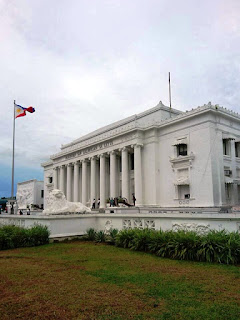 |
| The beautiful Leyte Provincial Capitol in Tacloban |
Getting the Flight
Three airlines fly direct to Tacloban from Manila - Philippine Airlines, Air Asia Philippines, and Cebu Pacific. Flight duration is 1 hour 20 minutes.
We booked our flights a year in advance, thanks to Air Asia's Red Hot Piso Sale back in June 2016. We got our round trip flight for only PHP219.04 per person. Bulk of this amount went to the passenger service charge while base fare was only at PHP1.
Tips on how we snagged this really really low fare:
1. Subscribe to the airline's newsletter to keep yourself updated of upcoming promotions.
2. Book on the first day. The key is to always book early.
3. Be flexible in your travel dates and be patient enough to go through different dates to check for seat availability.
4. Be decisive. Book the flights quickly when availability shows up. Sometimes you just have to chase and book that cheap fare and the rest will follow.
Where to Stay
With several hotels to choose from, it is unlikely for visitors to encounter problems in choosing the accommodation that suits their budget and needs. Here's a list of our recommended Tacloban hotels to choose from:
1. Go Hotels Tacloban
This hotel caters to the budget-conscious. It's because Go Hotels adheres to the limited-service concept by offering no-frills accommodation and providing only the basic necessities. This lowers the price of the rooms. And just like budget airlines, guests can avail of "add on" services and features for an added charge.
What we like about this hotel is it offers modern and comfortable rooms with practical amenities. Perfect if you're the type of traveler who spends most time out of the hotel exploring the place and its tourist attractions.
 |
| Go Hotels Tacloban |
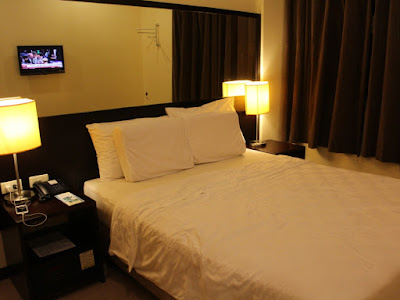 |
| Go Hotels, modern and functional rooms |
Go Hotels Tacloban is a mere 10-15 minute drive from the airport and is conveniently located beside the biggest mall in the city, Robinsons Tacloban. Rates range from PHP588 to 1,488++.
 |
| Queen sized bed inside the room |
 |
| The bathroom |
For bookings and more details, visit the hotel's website here.
2. Hotel XYZ
This is a mid-range hotel; not exactly budget yet still affordable. It offers beautifully designed rooms furnished with modern amenities that will guarantee a rewarding hotel experience.
 |
| The modern and stylish rooms of Hotel XYZ |
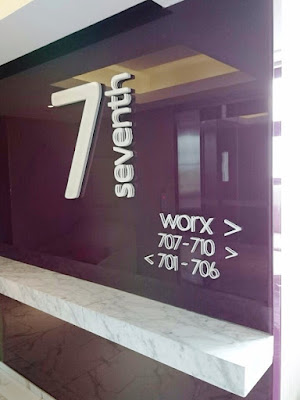 |
| Hallways |
 |
| Splazzh! The hotel's rooftop pool |
Hotel XYZ is located along P. Zamora St., well within the downtown area of Tacloban making it accessible to tourist attractions, banks, supermarkets, bus terminals, hospitals, and government offices. It is also just 20-30 minutes away from the airport.
 |
| Must try Moron Ice Cream at Hotel XYZ |
Rates range from PHP2,800++ for the Fine Room to PHP6,500++ for the Fabulous Room.
For more information, visit the hotel's website here.
3. The Oriental Leyte
This hotel is one of the fanciest accommodation in Tacloban. It is a contemporary resort that is set on a sprawling 10-hectare beach.
After its renovation following the damage brought by Typhoon Yolanda, the hotel promises a better hotel experience for its guests. From its dashing interiors to its modern facilities, The Oriental offers an overall feel that is stylish, luxurious, and exquisite.
 |
| The poolside of The Oriental Leyte |
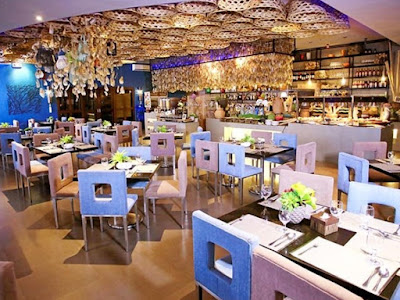 |
| Samsara Restaurant c/o The Oriental website |
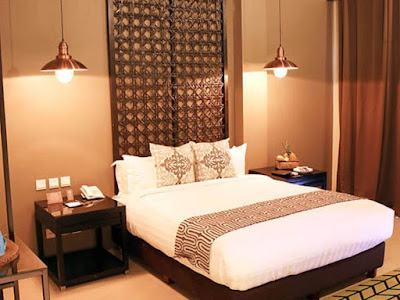 |
| Premier Room c/o The Oriental website |
The resort is located on Red Beach in Palo, the town next to Tacloban. It is adjacent to the MacArthur Landing Memorial site. From the airport, it is a mere 20-30 minute drive.
The rates range from around PHP4,000++ for the Deluxe Room to PHP30,000++ for the Governor's Suite.
For more details, visit the resort's website here.
Getting Around
To get around the city, there is a variety of transportation that is available.
The jeepney is the main mode of transportation in Tacloban. Most areas in the city fall within the minimum fare radius so you only have to shell out PHP8. Just like in Manila, the jeepneys here use route signboards that indicate its destination. This can pose a problem for tourists who are unfamiliar with the places in the city. To avoid getting lost, ask the locals for directions and tell the driver to drop you off at your desired destination.
An alternative mode of transportation in the city is the tricycle. Just like the jeepney, its minimum fare is PHP8. Tricycles' usual routes are the inner streets of Tacloban. However, they can also be contracted or "pakyaw", as locals call it, for tours and special tours. Fare ranges from PHP50 to PHP100. Just don't be shy to haggle with the friendly drivers.
Places to Visit and Things to Do
1. Leyte Provincial Capitol
Built in 1907, the Leyte Provincial Capitol or the "Pamunuan San Lalawigan Sa Leyte" is a neo-classical building reminiscent of American-era structures during the occupation. It is considered as one of the most beautiful capitol buildings in the Philippines.
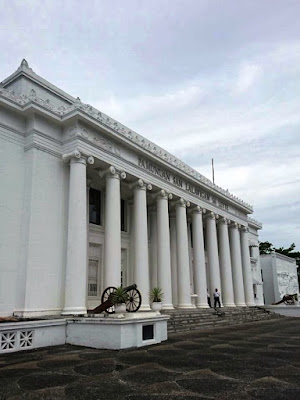 |
| The all-white facade of the building |
It has an all-white facade with two prominent bas reliefs on the sides. The left-wing depicts the country's first Christian mass held on the island of Limasawa in Southern Leyte. The right-wing depicts the historical World War II landing of General MacArthur in Red Beach, Palo, Leyte.
 |
| The first mass in Limasawa bas relief |
 |
| The Leyte Landing bas relief |
The building also served as the Capitol Building of the Philippines from October 1944 to February 1945. On its steps, Sergio Osmena was formally proclaimed as the President of the Commonwealth of the Philippines.
 |
| Briefly served as the nation's capitol building |
 |
| Philippine flag displayed in front of the building |
The capitol grounds is open 24 hours and can be visited for free.
2. San Juanico Bridge
The San Juanico Bridge is considered the longest bridge over water in the Philippines spanning a length of 2.16 kilometers. It was once called "Marcos Bridge" since it was built during the time of Marcos; and "The Bridge of Love" as this was a testament of the former president's love of Imelda.
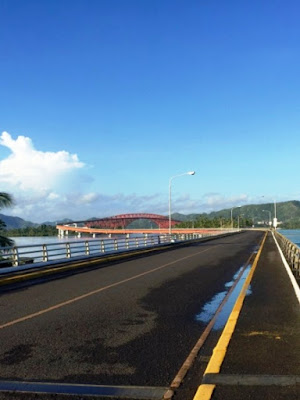 |
| The stunning San Juanico Bridge |
 |
| Vehicles passing through the bridge |
 |
| San Juanico is a truss bridge |
It remains to be one of the most picturesque bridges in the country with a beautiful arch-shaped truss design and with views of whirlpools and islets of the San Juanico Strait.
 |
| The S-shaped portion of the bridge |
 |
| View of Samar Island |
 |
| Picturesque San Juanico Strait |
Note: The bridge takes the shapes of letter "L" and "S", the first letters of the islands it connects, Leyte and Samar.
The bridge is open 24 hours and can be visited free of charge. Vehicles are not allowed to stop or park in the middle of the bridge. Take pictures as your car climbs up the bridge or walk from both ends to experience the bridge and enjoy the stunning view.
3. Sto. Niño Shrine and Heritage Museum
The Sto. Niño Shrine and Heritage Museum is one of the many presidential rest houses built by Ferdinand Marcos. Located along Real Street in Tacloban, this mansion was a symbol of grandeur during the Marcos administration. Presently, it is under the requisition of the PCGG. But it is open to the public for viewing.
It houses a chapel dedicated for Sto. Niño, the patron of Leyte; 13 guestrooms, each with a unique theme representing different regions of the country; bedrooms for the former first family; a grand ballroom; and an Olympic size swimming pool.
It also contains hundreds of beautiful artifacts, antiques, art works and collections from all over the world such as tiles and clocks from Italy, floor carpets from Argentina, dressers and cabinets from Korea, chandeliers from the Czechoslovakia, mirrors from Austria, porcelain jars and ivory collection from China, jade from then Burma, and paintings of Bebsi Brias for the Marcoses.
The museum is open from 8:00 AM to 5:00 PM and collects PHP200 entrance fee for a group of three and additional PHP30 for a still camera or PHP200 for a video camera.
4. Sto. Niño Church
Sto. Niño Church, also known as the Church of Liberation, is the home of the patron saint of the city. The Sto. Niño de Leyte is an ivory-made icon of the child Jesus said to be miraculous.
The church started as a small chapel around 1596 and saw various changes in the order managing it: from Jesuits, Augustinians, Franciscans, and eventually to the Archdiocese of Palo. Although the church has a very long history, the present structure is less than 50 years old. This is because the previous structures were either destroyed by typhoons or earthquakes.
Most recently the church has undergone renovation after it was severely damaged by Typhoon Yolanda.
 |
| Pure white facade of the church |
 |
| The golden retablo with the miraculous Sto. Niño |
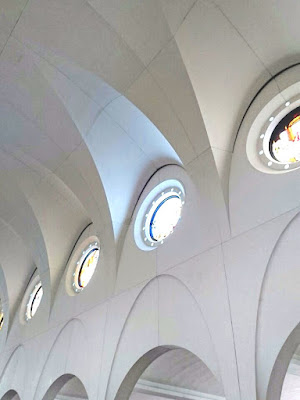 |
| Curved and circular stained glass windows |
The church serves as a symbol of the locals' resiliency and renewal despite facing various natural disasters over the centuries.
5. MacArthur Landing Memorial Park
The MacArthur Landing Memorial Park marks the spot where the American liberation forces landed during the Battle of Leyte in World War II.
 |
| Entrance to the park |
The park is 6.78 hectares and located in Palo, some 5 kilometers south of Tacloban. The main attraction of the park are the seven bronze statues on a man made pool depicting General MacArthur and his entourage during the historic Leyte landing. The statues were designed by scupltor Anastacio Caedo and was inaugurated in 1981.
 |
| Double life-sized statues of MacArthur's entourage |
 |
| Statues installed within a shallow pool |
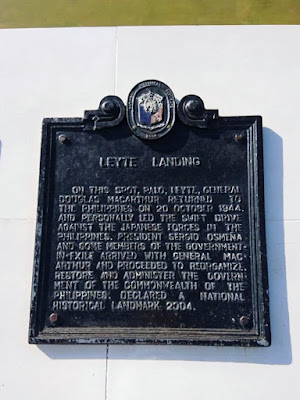 |
| The park is a declared National Historical Landmark |
The park is open 24 hours and can be visited free of charge.
6. Watch the Pintados and Sangyaw Festivals
Tacloban hosts two festivals during the month of June - the Pintados-Kasadyaan Festival and the Sangyaw Festival.
First held on June 29, 1987, the Pintados Festival depicts the pre-Spanish history of the people of Leyte, including the local epics, folklores, and religions. The main attraction of the festival are the street dancers painted from head to toe with designs resembling the tattooed warriors of the past, also known as the "pintados". It also incorporates into the theme the locals' devotion and worship of Sto. Nino. Later in 1995, the Kasadyaan Festival was introduced by the provincial government of Leyte and merged into the Pintados Festival. Now, the Pintados-Kasadyaan Festival of Festivals bring together the diverse, colorful, and vibrant festivals from all over Leyte and Samar, making it one of the country's major cultural-religious celebrations.
 |
This year's Pintados champion, the Buraburon Festival of Burauen
c/o the Facebook page of the Local Government Unit of Burauen |
The Sangyaw Festival was first started by Imelda Marcos in 1974 but was discontinued many years later. It was revived by the city government in 2008 when Tacloban was declared a highly urbanized city. Now it is celebrated along with the Pintados Festival. The festival highlight is the Parade of Lights that features colorful and decorated floats, lights, and street dancers partying to the upbeat Sangyaw theme. Other activities include the Balyuan Rites which reenacts the historical exchange of the Sto. Nino image between Tacloban and Basey; the traditional fluvial and land processions; and the pontifical mass at the Sto. Nino Church.
 |
| Colorful Sangyaw floats |
 |
| Colorful Sangyaw floats |
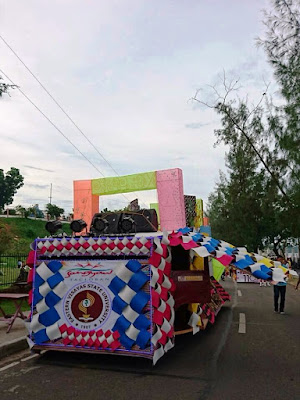 |
| Colorful Sangyaw floats |
 |
| Sto. Niño in one of the floats |
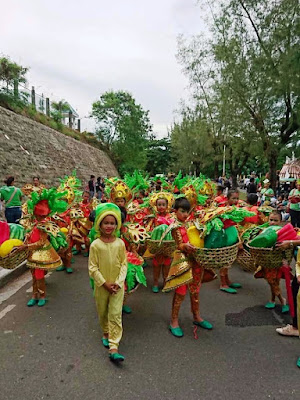 |
| Sangyaw street dancers |
 |
| Sangyaw street dancers |
 |
| Sangyaw street dancers |
Both festivals are celebrated annually towards the end of June. And you get to enjoy them for free!
So what do you think of our guide? Please leave your comments in the box below.









































